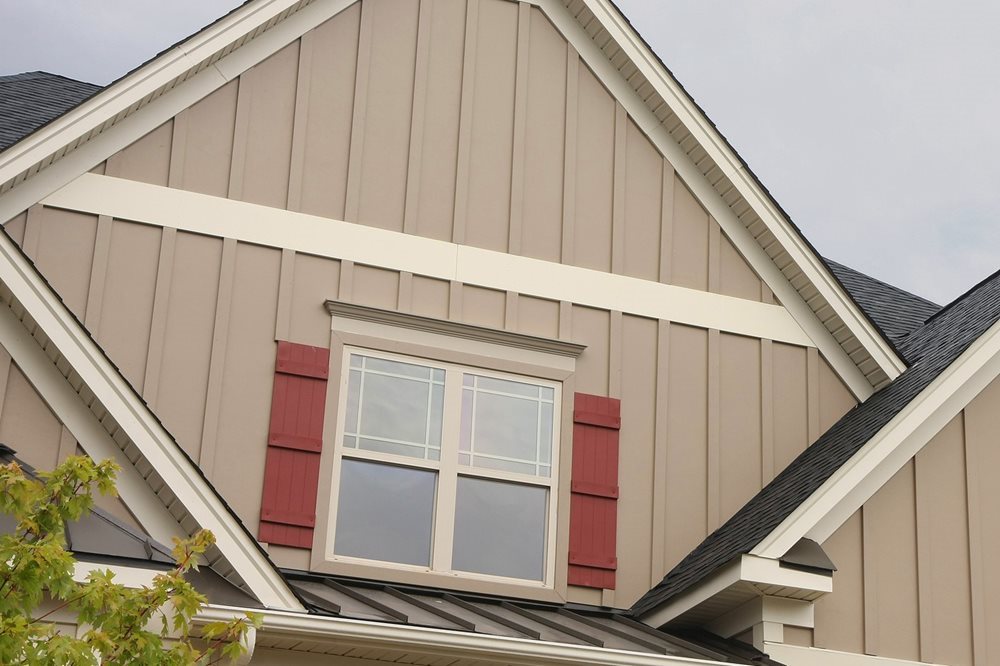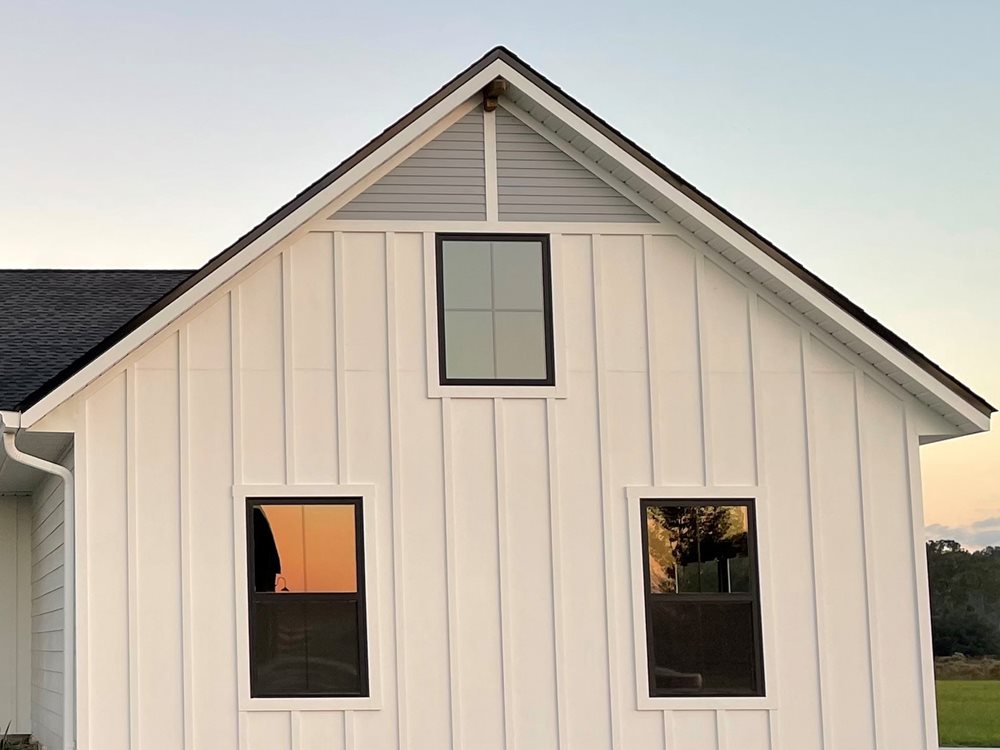House trim is a finishing touch that gives a home a more professional, polished look. It also gives you the ability to significantly affect the overall aesthetic of the home.
With Hardie®Trim fiber cement boards, you can accentuate the details of your project with a highly durable, long-lasting material, while also enhancing the exterior color palette and visual texture. The result is a home that not only looks beautiful, but one that stands up to Mother Nature.
We’ve outlined six ways to use Hardie®Trim boards for your next project, and provided smart design tips to help make the exterior shine and achieve the perfect style.
Before you start the installation, be sure to carefully review all installation instructions specific to your country and HardieZone® region. The information provided below provides a summary only.
Inside Corner Trim
What it does: Installing Hardie®Trim boards on inside exterior corners is necessary to finish siding courses, but it also adds color and emphasizes a home’s height with a strong vertical line.
How to use it: Build inside corners with either a single Hardie®Trim board in the corner, or with one board on each wall.
Tip: Use the double board installation method to draw more attention to each wall as they will be equally framed. On the other hand, using a single board will minimize the appearance and provide a sleeker, more modern look.
Outside Corner Trim

What it does: Finishing outside corners with Hardie®Trim boards gives a home a cleaner, crisper appearance, and is the preferred installation application for most James Hardie® siding products.
How to use it: Build corners with two Hardie®Trim 5/4 or 4/4 boards, which can be pre-assembled before they’re installed. Pre-assembled corners generally make installation quicker since you’re making efficient use of your workstations, and typically look sharper on the wall.
Tip: Your trim width selection (as well as color) will be an important factor in your overall exterior aesthetic. Wider trim will increase the “framed” look of the house, especially in a high-contrast color, and may be more useful on larger projects.
Band Board Trim

What it does: Hardie®Trim board can be used as a decorative band board to break up the field of siding on a home and introduce graceful transitions from one part to another.
How to use it: Band boards are installed horizontally and you can choose any Hardie®Trim board width, which will depend on the style of the home.
Tip: Band boards are an ideal transition from lap siding to gable accent materials. However, be sure that you can visually distinguish between the lap siding and band board, regardless of color. A good way to determine if your design components are distinctive, or blending, is with a black and white filter on your phone’s camera.
Door and Window Trim
 What it does:
What it does: This is the most common use of Hardie
®Trim boards and essential for covering openings around windows and doors.
How to use it: Install Hardie®Trim boards around doors and windows using the “cap over” method, which means the header, or horizontal top piece, extends and caps over the vertical jamb pieces. For windows, the bottom trim piece, or sill trim, fits in between the jambs.
Tip: Your door and window trim doesn’t have to be the same color as your corner or other trim. Consider high-contrast and monochrome color schemes, as well as different widths, to achieve a unique look. Matching your door and window trim to your siding color will minimize the appearance of trim, while preserving the visual texture.
Rake and Fascia Boards
What they do: Installing Hardie®Trim boards over sub-fascia and rafter tails gives a home’s roof and eaves a finished look.
How to use it: Hardie®Trim boards can be fastened directly over a 2x sub-fascia or directly to rafter tails. The fascia board should be no more than 2 inches larger than the sub-fascia. When you put that into practice, it means installing an 8-inch fascia board over a nominal 2 x 6 sub-fascia.
Tip: Think like a drop of water and use a drip edge to protect your fascia. A drip edge helps minimize water ingress into the soffit or cornice cavity. Choose a design that effectively channels water away from the face of the fascia and into gutters, if present.
Battens
 What they do:
What they do: Hardie
®Trim battens create vertical lines and can significantly change the aesthetic of HardiePanel
® vertical siding. They are often used as part of the farmhouse style.
How to use them: Hardie®Trim battens are installed over HardiePanel vertical siding, and can be placed at any interval, so long as they are attached to a wood or steel backing.
Tip: Experiment with your batten spacing to increase or decrease the appearance of heights. Tightly spaced battens will draw the eye upward and create a slimming appearance, whereas widely spaced battens allow more of the panel siding to shine through.
Find a supplier of James Hardie® products for your next project and brush up on installation techniques with our helpful video series. And, make sure you always keep jobsite safety top of mind.